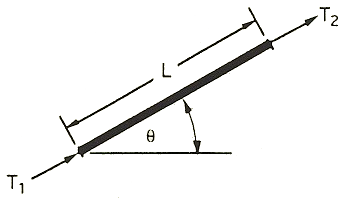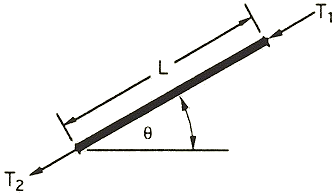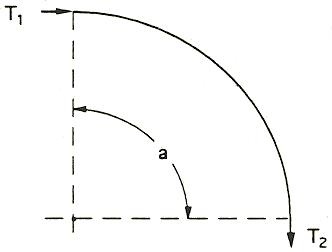

| Appendix > Cable Pulling Calculations > Pulling Tensions |
Version: 10.1 |
Given the amount of tension on cables going into a section of conduit (T1), the following equations determine the amount of tension on cables coming out of the conduit section (T2).
Note: T1 of the conduit's first section only is the reelback or initial tension.
In subsequent sections of conduit, T, of a preceding section of conduit is T1 of the next section of conduit.
T2 = Outgoing tension (lb)
T1 = Incoming tension (lb)
L = Length of conduit section (ft)
K = Effective coefficient of friction (dimensionless)
W = Total weight of cables (lb/ft)
T = Offset angle (degrees)
e = Base of natural logs (2.718)
a = Bend angle (radians) (see table below)
Degrees
Radians*
11.25°
.196
22.50°
.393
30°
.524
45°
.785
60°
1.047
90°
1.571
* 1 radian = 57.30°
|
A. For straight horizontal pulls: 
|
T2 = T1 + LWK |
|
|
B. For straight upward pulls: 
|
T2 = T1 + LW (sin T + K cos T) |
|
|
C. For straight downward pulls: 
|
T2 = T1 - LW (sin T - K cos T) |
|
|
D. For horizontal, upward, or downward pulls around bends: 
|
T2 = T1 eKa |
|